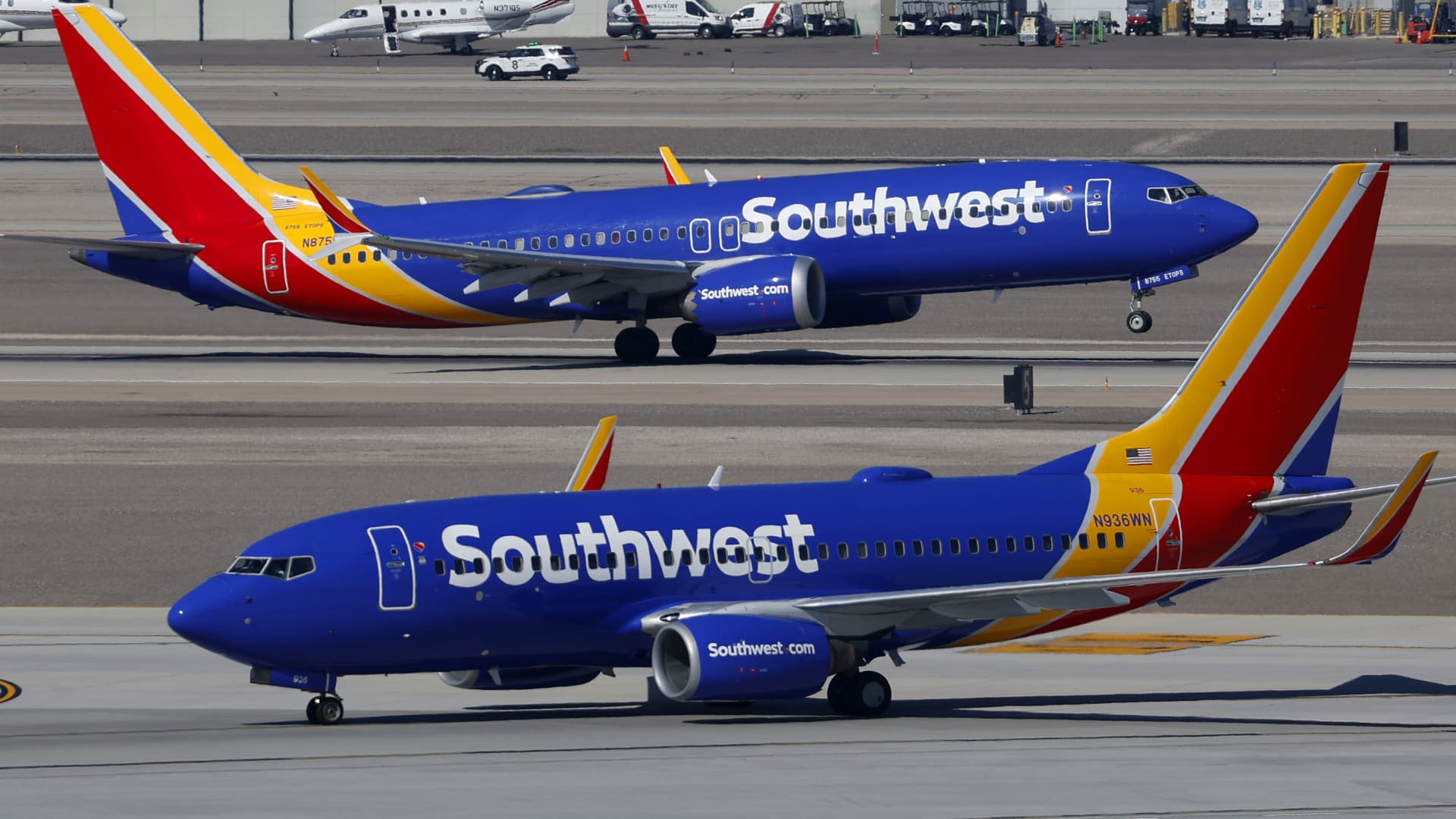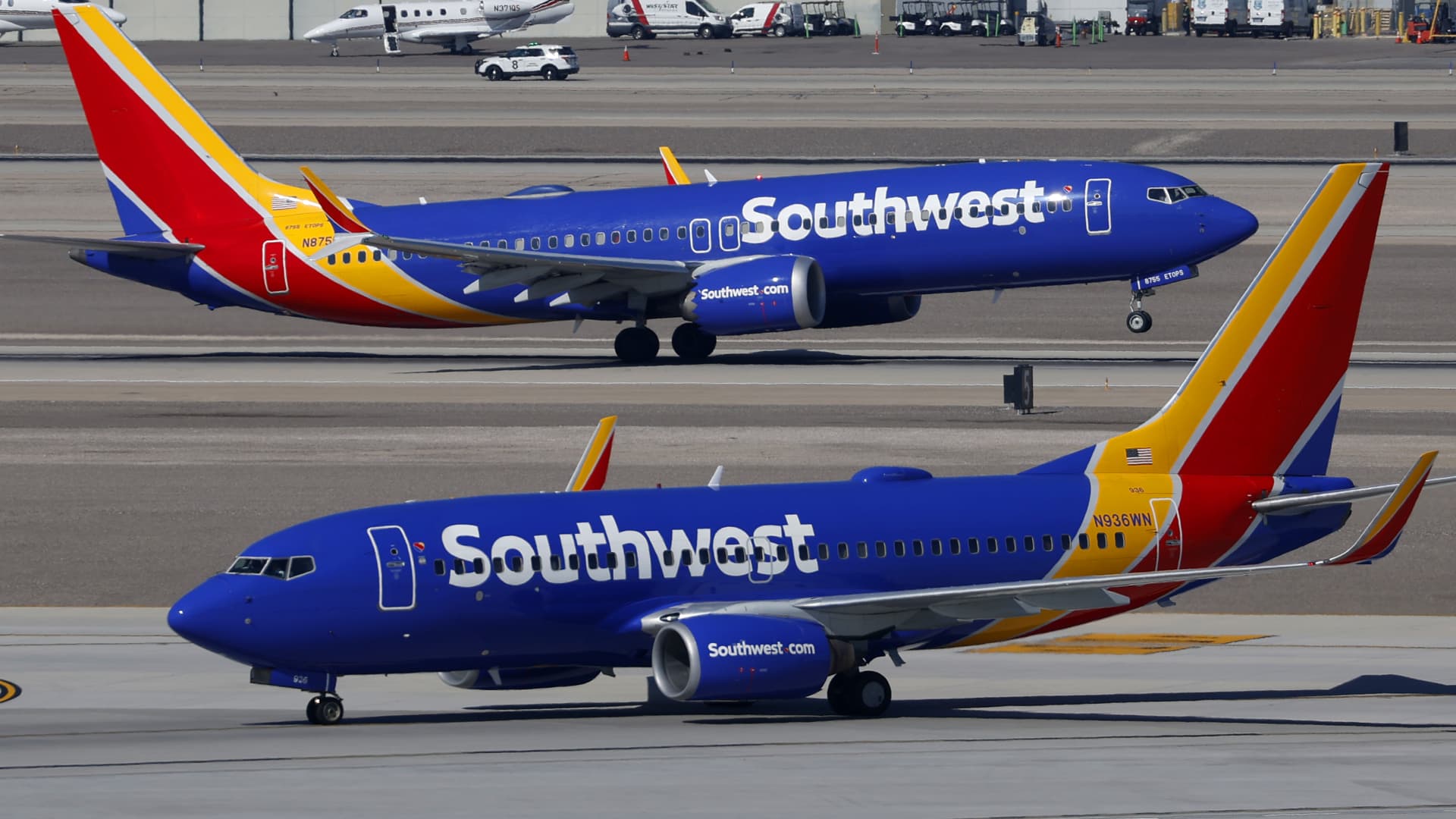The End of an Era: Analyzing Southwest Airlines’ Transition to Assigned Seating
Introduction
For over five decades, Southwest Airlines has been a beacon of innovation and customer-centric policies in the aviation industry. Its open seating policy, which allowed passengers to choose their seats upon boarding, was a hallmark of the airline’s identity. However, the recent announcement of a shift to assigned seating marks a significant departure from this tradition. This transition is not merely a change in policy but a strategic pivot that reflects the evolving landscape of the airline industry and the shifting preferences of modern travelers.
Why Fix What Wasn’t Broken? The Rationale for Change
Southwest’s open seating policy, while beloved by many, was not without its flaws. The system, which relied on passengers checking in early to secure favorable boarding groups (A, B, or C), often led to a chaotic boarding process. Passengers had to strategize to avoid middle seats or secure spots near the front, which could be stressful and time-consuming. Over time, these drawbacks became increasingly apparent as customer expectations evolved.
Changing Customer Expectations
Modern travelers have grown accustomed to the conveniences offered by other airlines, such as the ability to choose specific seats, opt for extra legroom, or ensure proximity to family members. Southwest’s refusal to offer these options began to put it at a competitive disadvantage. The airline recognized that its customer base was no longer satisfied with the unpredictability of open seating. By introducing assigned seating, Southwest aims to meet these evolving expectations and enhance customer satisfaction.
Revenue Generation
Assigned seating opens up new revenue streams for Southwest. By offering premium seating options, such as extra legroom or seats near the front of the aircraft, the airline can tap into a market of travelers willing to pay for a more comfortable and personalized experience. This move aligns with industry trends of unbundling services and offering tiered pricing, allowing Southwest to maximize its revenue potential.
Operational Efficiency
While the open seating system was initially designed to streamline boarding, it often led to delays and inefficiencies. Passengers jockeying for seats, gate agents resolving seating disputes, and the general uncertainty of the boarding process could all contribute to slower turnaround times. Southwest believes that assigned seating, coupled with a revised boarding process, can actually improve overall operational efficiency. This change is expected to reduce boarding times and minimize disruptions, ultimately enhancing the airline’s performance.
Attracting Business Travelers
The absence of assigned seating made Southwest less appealing to business travelers, who often require specific seating arrangements for work purposes or prefer the predictability of knowing their seat in advance. By offering assigned seating, Southwest aims to attract a larger share of the lucrative business travel market. This strategic move is part of a broader effort to diversify its customer base and increase its market share.
Navigating the New Skies: What the Assigned Seating Model Looks Like
The transition to assigned seating is a complex process that will be implemented gradually. Southwest has outlined a phased approach to ensure a smooth transition and address any unforeseen challenges. The rollout is expected to begin in early 2026, with ticket sales for flights with assigned seating starting in the second half of 2025.
Phased Implementation
Southwest will likely implement assigned seating gradually, starting with select routes or aircraft. This phased approach allows the airline to fine-tune the system and address any issues that may arise. By testing the new model on a smaller scale, Southwest can gather valuable feedback and make necessary adjustments before a full-scale rollout.
Seat Categories
Southwest plans to offer different seat categories to cater to a range of customer preferences and budgets. These categories include:
- Standard Seats: These will be the basic seats, assigned at no extra cost. They will provide the same level of comfort and convenience as the current open seating model.
- Preferred Seats: Seats in more desirable locations, such as near the front of the aircraft or with extra legroom, will be available for an additional fee. These seats will offer enhanced comfort and convenience for passengers willing to pay a premium.
- Extra Legroom Seats: As the name suggests, these seats will offer significantly more legroom and will likely command a higher price. They will cater to passengers who prioritize comfort and are willing to pay for it.
Boarding Process Evolution
While Southwest intends to retain elements of its unique boarding process, changes are inevitable. The boarding groups (A, B, and C) will likely still exist, but their significance may diminish as passengers will already have assigned seats. The airline is exploring ways to maintain its operational efficiency while incorporating assigned seating. This may involve revising the boarding sequence or introducing new boarding groups to accommodate the new seating model.
Loyalty Program Integration
Southwest’s Rapid Rewards loyalty program will play a crucial role in the new seating system. Top-tier members may receive priority access to preferred seating options or complimentary upgrades. This integration aims to enhance the value of the loyalty program and incentivize frequent flyers to continue choosing Southwest for their travel needs.
Maintaining Flexibility
Southwest emphasizes its commitment to maintaining its hallmark flexibility, such as no change fees. The airline will likely seek to integrate this flexibility into the assigned seating model, allowing passengers to change their seats or flights without penalty. This approach ensures that Southwest remains true to its customer-centric ethos while adapting to the new seating model.
Turbulence Ahead? Potential Challenges and Customer Impact
The transition to assigned seating is not without its potential challenges. Southwest must carefully manage several factors to ensure a smooth and successful implementation.
Customer Backlash
A significant portion of Southwest’s loyal customer base is attached to the open seating policy. The airline faces the risk of alienating these customers if the new system is perceived as overly complicated, expensive, or detrimental to the Southwest experience. Effective communication and a smooth implementation are crucial to mitigating this risk. Southwest must clearly explain the benefits of the new system and address any concerns or misconceptions that may arise.
Operational Complexity
Implementing assigned seating requires significant changes to Southwest’s IT systems, training programs, and operational procedures. The airline must ensure that these changes are implemented seamlessly to avoid disruptions and delays. This may involve investing in new technology, retraining staff, and conducting thorough testing to identify and address any potential issues.
Pricing Strategy
Southwest must carefully balance its pricing for assigned seats. If the prices are too high, customers may balk. If they are too low, the airline may not generate sufficient revenue to justify the change. Finding the right balance is crucial to ensuring that the new seating model is both attractive to customers and financially viable for the airline.
Maintaining Differentiation
Southwest’s open seating policy was a key differentiator in a crowded market. The airline must find new ways to stand out from the competition while embracing assigned seating. This may involve emphasizing other unique aspects of the Southwest experience, such as its friendly customer service, no change fees, or innovative boarding process.
Impact on Customers
The transition to assigned seating will have several implications for customers:
- Increased Choice: Passengers will have more control over their seating experience, allowing them to choose seats that meet their specific needs and preferences. This increased choice is expected to enhance customer satisfaction and loyalty.
- Potential for Higher Costs: Passengers who desire preferred or extra legroom seats will likely have to pay extra. This could increase the overall cost of flying Southwest. However, the airline aims to offer a range of options to cater to different budgets and preferences.
- Less Flexibility for Some: Passengers who previously relied on strategically boarding early to secure their preferred seats may find themselves at a disadvantage under the new system. However, Southwest’s commitment to flexibility and no change fees aims to mitigate this concern.
- Altered Boarding Experience: The boarding process will likely be less chaotic but potentially less social as well. The sense of camaraderie that often characterized Southwest’s boarding process may diminish. However, the airline is exploring ways to maintain the social and engaging aspects of the boarding experience while incorporating assigned seating.
Charting a New Course: Southwest’s Strategic Evolution
The move to assigned seating is part of a broader strategic evolution at Southwest Airlines. The airline is seeking to modernize its operations, enhance its customer experience, and improve its financial performance in an increasingly competitive market. Other key initiatives include:
- Fleet Modernization: Southwest is investing in new, more fuel-efficient aircraft to reduce costs and improve its environmental footprint. This modernization effort aims to enhance the airline’s operational efficiency and sustainability.
- Network Expansion: Southwest is expanding its network to new destinations, both domestic and international, to attract new customers and diversify its revenue streams. This expansion is part of a broader effort to increase market share and reach new customer segments.
- Technology Investments: Southwest is investing in new technologies to improve its website, mobile app, and customer service capabilities. These investments aim to enhance the customer experience and streamline operations.
- Enhanced Customer Service: Southwest is working to improve its customer service across all touchpoints, from booking to baggage claim. This focus on customer service is part of a broader effort to differentiate the airline and build customer loyalty.
The introduction of assigned seating is a bold move that reflects Southwest’s commitment to adapting to changing market dynamics and customer expectations. While the transition may be challenging, it also presents an opportunity for Southwest to strengthen its position as a leading low-cost carrier and attract a new generation of travelers.
A New Horizon: The Future of Southwest
The decision to abandon open seating marks a significant turning point in Southwest Airlines’ history. It signals a willingness to embrace change and adapt to the evolving needs of its customers. Whether this change will be ultimately successful remains to be seen. Southwest’s ability to navigate the challenges, maintain its unique brand identity, and deliver a seamless customer experience will determine its future success in the era of assigned seating.
One thing is certain: the skies at Southwest Airlines are entering a new and uncharted chapter. The airline’s commitment to innovation, customer satisfaction, and operational excellence will be crucial in shaping its future. As Southwest navigates this transition, it has the opportunity to redefine its brand and solidify its position as a leader in the aviation industry. The journey ahead is filled with both challenges and opportunities, but with a clear vision and a customer-centric approach, Southwest is well-positioned to soar to new heights.












